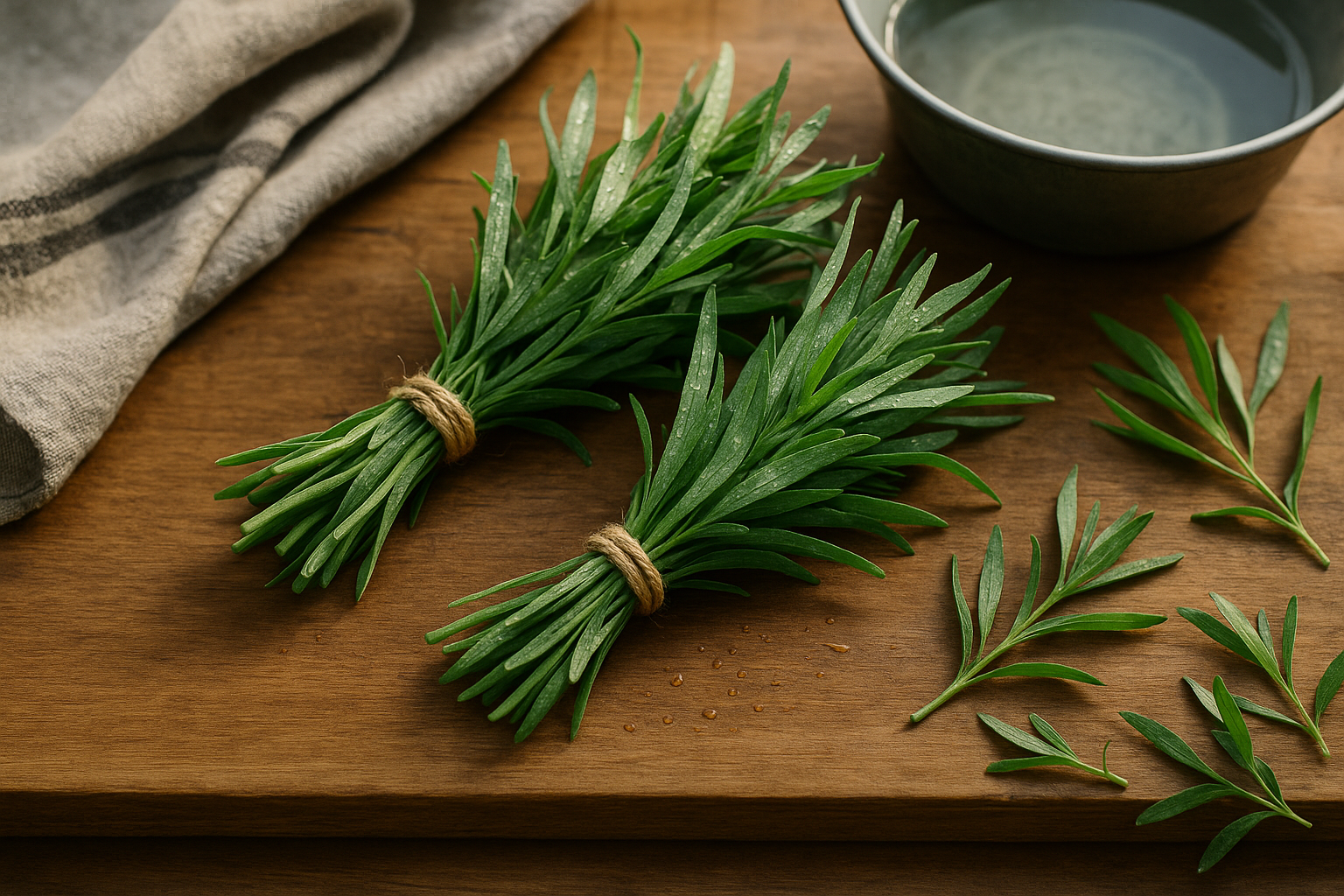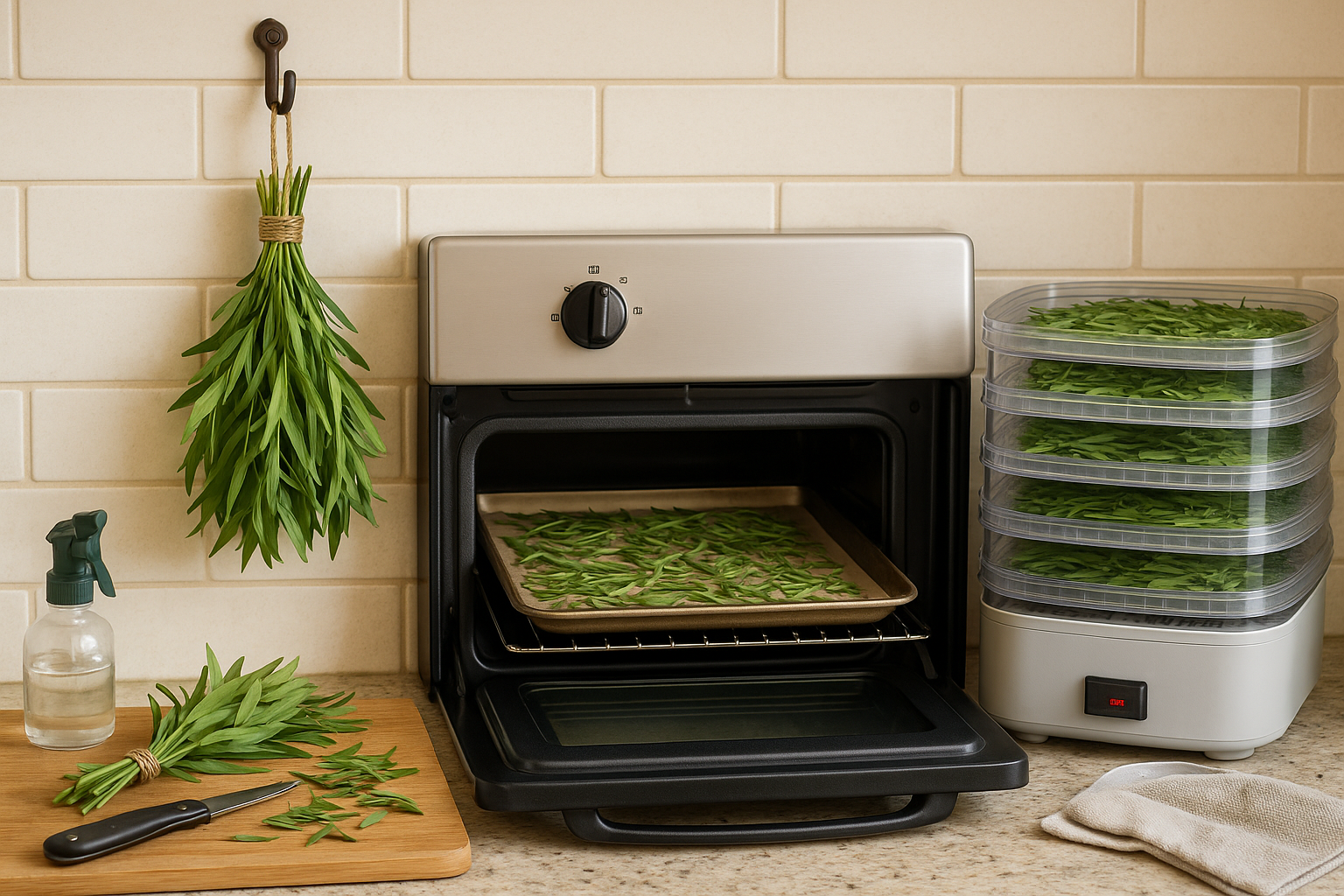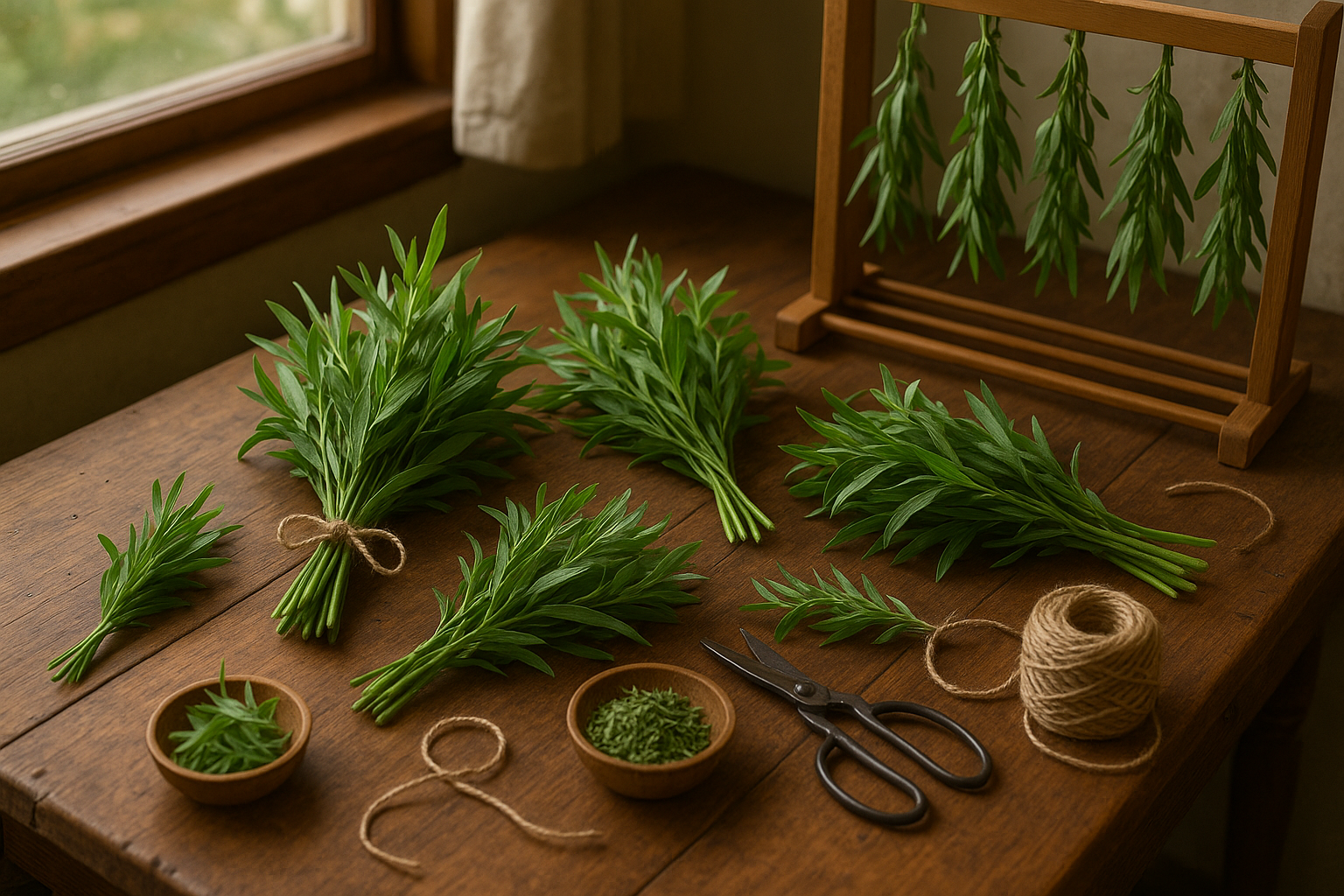Introduction
Drying tarragon is a simple yet smart way to capture the herb’s vibrant, slightly anise-like flavor for use long after the harvest season has ended. Tarragon is a favorite in kitchens around the world, lending its unique taste to everything from French béarnaise sauce to everyday salad dressings. But fresh tarragon wilts quickly, and letting it go to waste means losing a precious ingredient.
By preserving tarragon through drying, you not only reduce waste but also ensure you always have this aromatic herb on hand to elevate your meals. In this guide, we’ll walk you through step-by-step methods for drying tarragon, offer tips for proper storage, and suggest easy ways to incorporate dried tarragon into your favorite recipes. With just a little effort, you can keep your spice rack stocked and your dishes flavorful all year round.
When and How to Harvest Tarragon for Drying

The best time to harvest tarragon for drying is in late spring or early summer, just before the plant starts to flower. This timing ensures the leaves hold the most essential oils and flavor. Aim to harvest in the morning after the dew has dried but before the midday sun hits, as the herbs will be at their freshest and most aromatic.
Choose lush, green sprigs with no signs of yellowing or wilting—these offer the brightest flavor for drying. Snip stems about six inches long, focusing on new, vigorous growth rather than older, woody sections.
Once harvested, gently rinse the tarragon in cool water to remove any dirt or tiny insects. Then carefully pat the sprigs dry with a clean kitchen towel or paper towels—moisture left on the leaves can cause mold during drying.
For best results, bundle a few stems together and hang them upside down in a warm, well-ventilated spot away from direct sunlight. Alternatively, lay the sprigs out on a drying rack or screen. By carefully timing your harvest and preparing your tarragon properly, you’ll preserve both its vibrant flavor and culinary value for months to come.
Different Methods for Drying Tarragon

Drying tarragon at home is easy and can be done in a few different ways—air drying, oven drying, or using a food dehydrator.
Air drying is the most traditional method: simply gather tarragon stems into small bunches, tie them together, and hang them upside down in a dry, well-ventilated space out of direct sunlight for about 1–2 weeks. This method preserves flavor best and requires no special tools, but it works best in dry climates; in humid areas, leaves may turn moldy before they dry.
If you’re short on time or live where humidity is high, oven drying might be a better option. Spread washed and patted-dry tarragon leaves in a single layer on a baking sheet and place them in the oven at the lowest setting (usually between 150–180°F or 65–80°C), leaving the door slightly ajar for air flow. Check and turn the leaves every 15–20 minutes—they’re done when they crumble easily, usually within 1–2 hours. Oven drying is fast and accessible, but be careful: high heat can diminish tarragon’s delicate flavor and color.
For the most controlled and efficient results, use a food dehydrator. Arrange tarragon leaves on dehydrator trays and dry on the lowest herbal setting for about 1–4 hours, checking periodically. Dehydrators provide even drying regardless of the weather and are less likely to overheat your herbs, but they’re an investment if you don’t already own one.
When choosing a method, consider your local climate, how quickly you need the tarragon dried, and what kitchen gear you have. No matter which option you choose, store fully dried leaves in an airtight container in a cool, dark place so you can enjoy the garden-fresh flavor of tarragon all year round.
Tips for Properly Storing Dried Tarragon
Properly storing dried tarragon starts with making sure it’s fully dried before you put it away. You’ll know your tarragon is ready when the leaves are crisp, crumble easily between your fingers, and have lost any sign of softness or bend. If they feel at all rubbery, let them sit out a bit longer to prevent mold from forming later on.
Once your tarragon is bone-dry, choose an airtight container—glass jars with tight-fitting lids or small tin containers are excellent choices. Avoid using plastic bags, which can let in air and moisture over time.
Store your container in a cool, dark place, away from direct sunlight and sources of heat, like a pantry or cupboard. This helps preserve the herb’s flavor and prevents it from degrading quickly. For best results, keep your storage spot dry, since even small amounts of moisture can cause your hard-earned dried tarragon to lose its punch or spoil.
Properly dried and stored, tarragon can last up to 12 months while maintaining its signature aroma and flavor. Label each container with the date to track freshness, and check occasionally for any change in color or scent—these are signs it’s time to replace your stash.
If you want to go the extra mile, add a small packet of food-safe desiccant to the jar to absorb any residual moisture. By taking these simple but effective steps, you’ll ensure your dried tarragon stays at its best, ready to enhance your dishes with a burst of herby flavor whenever you need it.
How to Use Dried Tarragon in the Kitchen
Dried tarragon is a versatile herb that adds a subtle anise flavor to a wide variety of dishes, especially in French cuisine, where it’s a key ingredient in classics like Béarnaise sauce, chicken tarragon, and herb-infused vinegars. You’ll also find it elevating salad dressings, potato salads, and even scrambled eggs in Mediterranean and Eastern European recipes.
Because dried tarragon is more potent than fresh, use a 1:3 ratio—if a recipe calls for one tablespoon of fresh, substitute with one teaspoon of dried.
For best results, rehydrate dried tarragon before use: soak it in a small amount of warm water, broth, or white wine for about 10 minutes to soften the leaves and release more flavor. Alternatively, if you’re making a sauce or soup, add the dried tarragon early in the cooking process so it has time to infuse and meld with the other ingredients.
Here are some quick ways to use dried tarragon:
- Sprinkle a pinch over roasted vegetables.
- Mix into creamy sauces.
- Blend into compound butters for an instant flavor boost.
If you’re new to tarragon, start with small amounts—a little goes a long way—and adjust according to taste as you become familiar with its unique, aromatic profile.
Troubleshooting & FAQs for Drying Tarragon
One common issue when drying tarragon is mold growth, which happens if the sprigs aren’t spaced out enough or if humidity is too high during air-drying. To avoid this, always place sprigs in a single layer on a rack or hang them loosely in a dry, well-ventilated spot.
Another mistake is overdrying—leaves should be brittle, not brown or crumbly, since excessive heat zaps flavor. Use a low oven temperature (around 95°F/35°C) or a dehydrator set to herbs to help preserve essential oils.
If you notice your dried tarragon has faded in color or lost its aroma, it may be old or stored improperly. Try crumbling a leaf between your fingers—if there’s no scent, it’s time to replace your stash.
Freezing vs. Drying Tarragon
For longer storage, some home cooks wonder if freezing tarragon works better than drying. Freezing is an excellent alternative: wash, dry, and chop the leaves before sealing them in a freezer bag. Frozen tarragon keeps more of its fresh flavor and vibrant green hue but lacks the convenience of the shelf-stable dried version.
If possible, try both methods and see which best suits your cooking style:
- Dried tarragon is perfect for infusing oils and soups.
- Frozen tarragon works well in sauces and dressings.
Final Thoughts & Additional Preservation Ideas
Drying tarragon is an easy way to capture its unique, slightly sweet flavor for months. Dehydrated tarragon stores well in an airtight jar and is ready to use in soups, sauces, or sprinkled over roasted vegetables. This method is especially handy if you have a large harvest but limited freezer space.
If you’re looking to try something different, consider freezing fresh tarragon leaves in olive oil or mixing chopped tarragon into softened butter. Pour the butter into ice cube trays and freeze—then simply toss a cube into a hot skillet or onto baked fish for an instant burst of herbal goodness. Freezing with oil is perfect for preserving tarragon’s bright flavors in salad dressings and marinades.
For new ways to use your tarragon, explore classic French recipes like Béarnaise sauce or tarragon chicken, where the herb truly shines. Online resources such as the National Center for Home Food Preservation or cooking blogs like Serious Eats offer detailed guides and creative ideas. With a little effort, you’ll enjoy a year-round supply of tarragon and endless ways to incorporate it into your favorite dishes.
